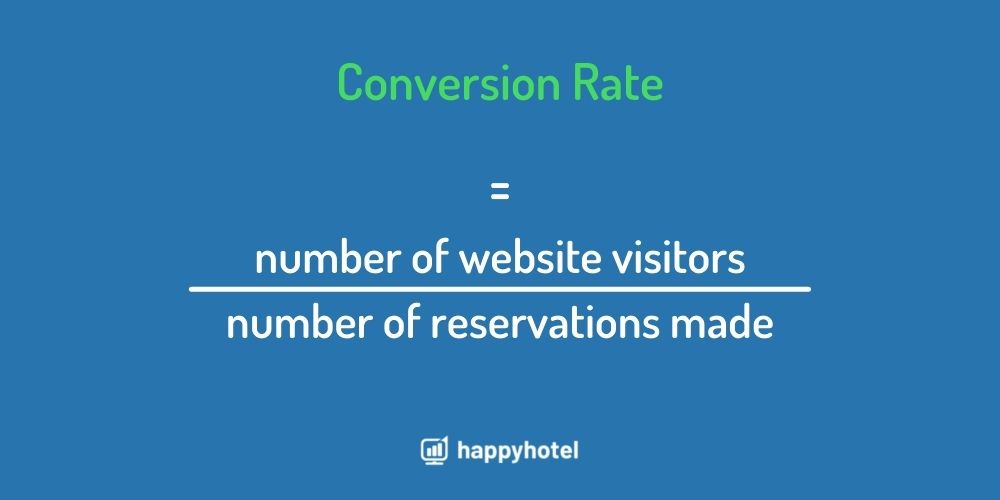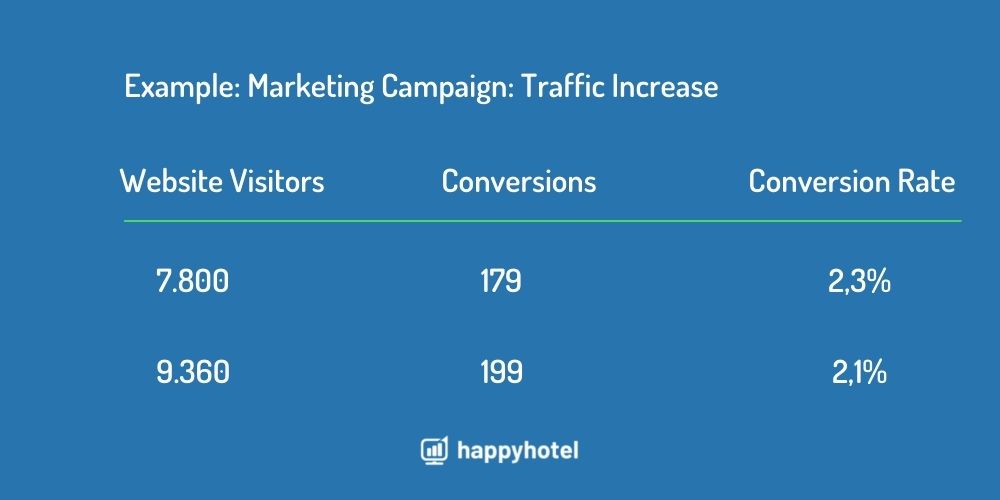The conversion rate is an important key figure in online marketing and revenue management. You should not only know it, but also be able to calculate, understand and read it correctly.
Content
- Explanation – What is a conversion rate?
- Not all conversion rates are the same!
- When is a conversion rate good?
- The myth “the higher the better”
- Conversion rate as an important KPI for revenue management
Explanation – What is a conversion rate?
According to the definition, a conversion in marketing means the conversion of a status of a target person into a new status. This can be the conversion of a prospect into a customer or the conversion of an enquiry into a booking. The rate is given as a percentage.
Not all conversion rates are the same!
A conversion does not always have to be a booking or a purchase in the literal sense. Every defined goal can be a conversion! This would also include, for example, the registration for a newsletter or the purchase of a voucher. First of all, it should be clarified which conversion exactly we are talking about.
In the hotel industry, we are talking about the conversion of a website visitor into a reservation.
You should not only consider the reservations that are created via the website, but all of them! Here is our definition:

You can find out the number of reservations made from your PMS. You can get the number of website visitors from Google Analytics.
It is not important how you define the conversion rate, but that you calculate it the same way every time. This ensures that you are not comparing apples with oranges.
When is a conversion rate good?
It is important to understand that the rate is the ratio between traffic (number of visits to your website) and reservations. Hotels with a wide range of services, such as F&B, Wellness, Meetings & Events, etc. often have significantly more traffic on their website, but this does not lead to conversions. In Google Analytics, these sessions can be excluded.
The average CR of hotel sites, according to a study by hotelariadigital.de, is 2.2%, with the top 20% of hotels having an average conversion rate of 5.6% and the bottom 20% having a conversion rate of 0.3%.
Be aware, these are only averages and one should not be misled by them. Instead, you should continuously observe and analyse the conversion, which can improve your own conversion rate. To do this, it is a good idea to document it and see what effect marketing measures have on the conversion rate.
The myth “the higher the better”
People often think that a CR is only good if it is as high as possible.
This thought most likely stems from the general goal of optimising one’s rate. Nevertheless, you should always keep in mind that you put your value in the ratio between traffic and conversions. Let’s look at an example:
Through a marketing campaign, the traffic on your website increases by 20%. Your CR, however, decreases by 0.2%.

It is obvious that with your campaign you were able to increase both the traffic on your site and your target conversion. Even though your rate has now dropped by 0.2%, your marketing campaign can be considered a complete success.
Important KPI for Revenue Management
In revenue management, CR is an indicator of price acceptance.
The higher the price acceptance, the higher the conversions and vice versa.
For this, you can check how many of your guests who start a booking process in the booking engine actually finish it.
